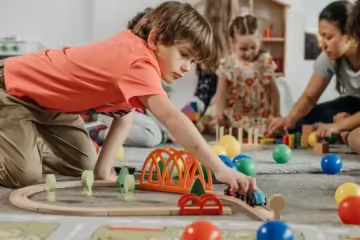In the bustling lives we lead, the pursuit of happiness often takes a myriad of forms. Interestingly, amidst the chaos and the constant striving for more, a simple act of giving can yield profound joy and satisfaction. The science behind this phenomenon is both fascinating and enlightening, providing insights into how altruism not only benefits the recipient but also enhances the well-being of the giver.
The Altruistic Pleasure Principle
At the heart of understanding why giving feels good is the concept of the “altruistic pleasure principle.” This principle suggests that humans are hardwired to find joy in helping others, a trait that has evolutionary benefits in terms of social cohesion and survival. Studies conducted in the UK have shown that individuals who engage in acts of giving and kindness report higher levels of happiness and satisfaction with life.
One particularly touching form of giving that embodies this principle is the creation and sharing of personalised photo gifts. These items, ranging from customised albums to framed pictures, carry a deep emotional value, making the act of giving them immensely satisfying. It’s not just the physical gift that matters, but the time, thought, and love invested in its creation.
The Psychological Rewards of Generosity
Delving deeper into the psychology of giving, it becomes evident that generosity triggers a positive feedback loop in our brains. When we give, our brain releases endorphins, the body’s natural feel-good chemicals, leading to what is often referred to as the “helper’s high.” This euphoric sensation is accompanied by a decrease in stress levels and an increase in emotional well-being.
Moreover, giving cultivates a sense of gratitude and connection. By focusing on the needs and happiness of others, we shift our perspective away from our own desires and problems. This shift can lead to a more fulfilled and contented state of mind, where material possessions lose their grip on our sense of happiness.
The Ripple Effect of Giving
The impact of generosity extends far beyond the immediate pleasure it brings to the giver and the recipient. It has a ripple effect, inspiring acts of kindness and generosity within communities. This phenomenon, known as the “ripple effect,” illustrates how one act of generosity can lead to an expansive network of kindness and support. In the UK, community projects and charity events often witness this powerful effect in action, as individuals come together to contribute to a greater cause, fostering a sense of unity and shared purpose.
Beyond the Gift: A World of Happiness
As we unwrap the science behind why giving feels good, it becomes clear that the act of giving transcends the material world. It’s a pathway to discovering a deeper sense of joy and connection with others. In a world where individual pursuits often overshadow communal well-being, embracing the joy of giving can lead to a more harmonious and fulfilling life.
The Gift That Keeps on Giving
The science of why giving feels good reveals a fundamental truth about human nature: we are inherently social beings, designed to find joy in the happiness of others. Whether it’s through volunteering, sharing personalised photo gifts, or simply lending a listening ear, every act of generosity contributes to a cycle of happiness that benefits all involved. As we continue to explore and embrace the power of giving, we not only enrich our own lives but also contribute to a kinder, more compassionate world.



